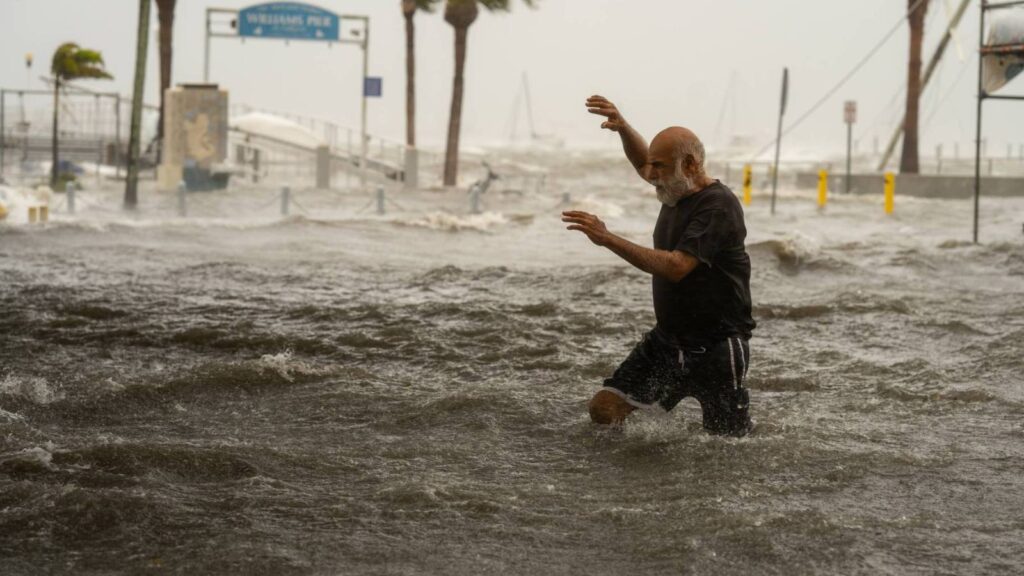If You Stay ‘You’re Gonna Die’: Tampa Mayor Warns Residents in Hurricane Milton Evacuation Zones
As Florida residents are still recovering from the devastation left behind by Hurricane Helene less than two weeks ago, those on the Gulf Coast are scrambling to prepare and evacuate before the arrival of Hurricane Milton, a Category 5 that is expected to come ashore Wednesday in the Tampa Bay region.
The city’s mayor issued a dire warning on Monday when speaking to CNN, and stressed the urgency of evacuating coastal areas due to the impending storm’s potential 10 to 12-foot tidal surge. Mayor Jane Castor cited Helene’s catastrophic impact, which caused massive damage with its six-foot surge.
Castor said that the “number one message” is that residents in evacuation zones “need to prepare, do whatever you need to do, and then get out.” She added, “Helene, was a wake up call. This is literally catastrophic.”
The mayor said that residents hoping to “ride out” the storm and deciding to not follow evacuation orders will be making a fatal mistake. “I can say without any dramatization whatsoever, if you choose to stay in one of those evacuation areas, you’re gonna die,” said Castor.
Hillsborough County issued mandatory evacuation orders for zones A and B on Monday, while Tampa city officials encouraged residents to look up their zones in order to be prepare for any evacuation orders.
As Milton barrels toward Florida from the Gulf of Mexico, its winds reached 180 mph on Monday and the hurricane and is expected to lead to widespread flooding when it makes landfall, with the state’s entire Gulf Coast especially vulnerable to the potential storm surge.
The rate at which Milton intensified over a span of a few days has been alarming. “This is definitely extraordinary,” Karthik Balaguru, a climate scientist who studies hurricanes at the Pacific Northwest National Laboratory, told Grist. “The storm barely formed on October 5, and on October 7, it is a Cat 5 hurricane. That is very impressive.”
Although Milton will likely lose some of it potency before it reaches Florida, it is forecasted to remain “extremely dangerous,” the National Hurricane Center reported. And while it is currently unclear what lead to its rapid intensification, many experts have pointed to warming waters. A graph by Brian McNoldy, a climatologist at the University of Miami, and shared by Vox, shows record high ocean temperatures in the Gulf of Mexico.
Warming sea surface temperatures, a result of greenhouse gases trapping energy from the sun and oceans absorbing more heat, is often highlighted as one of the key indicators of climate change. Changes in ocean temperatures, meanwhile, are predicted to lead to unusual and unexpected climate patterns across the globe that we are already seeing play out in real time.
The National Weather Service said that Milton could be the worst storm to hit the Tampa in more than a century. The region’s metro area has a population of more than 3.3 million people and a direct hit across the already battered coastline could have a devastating impact.





